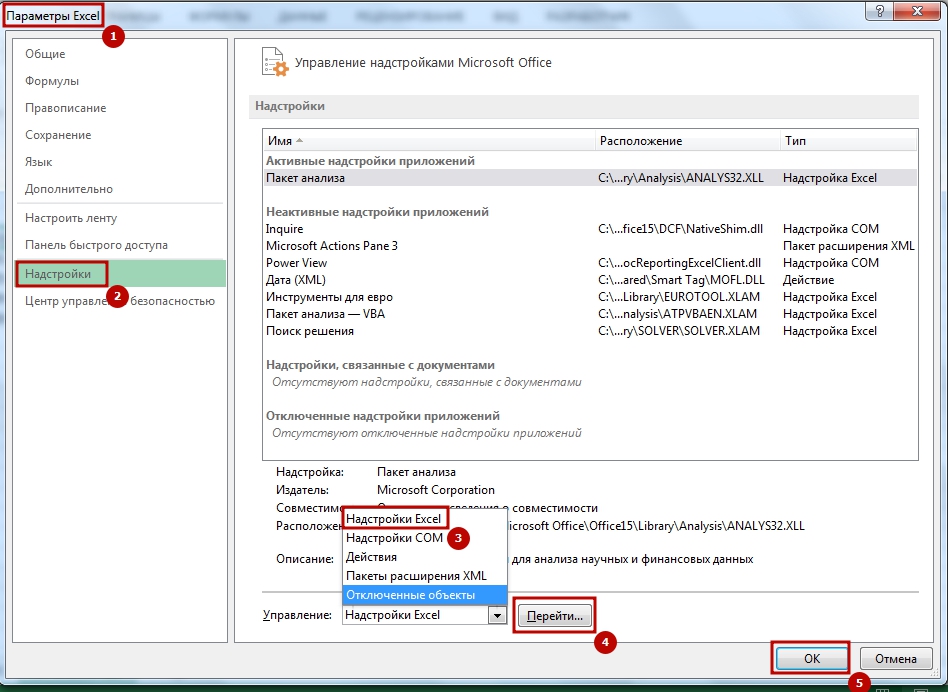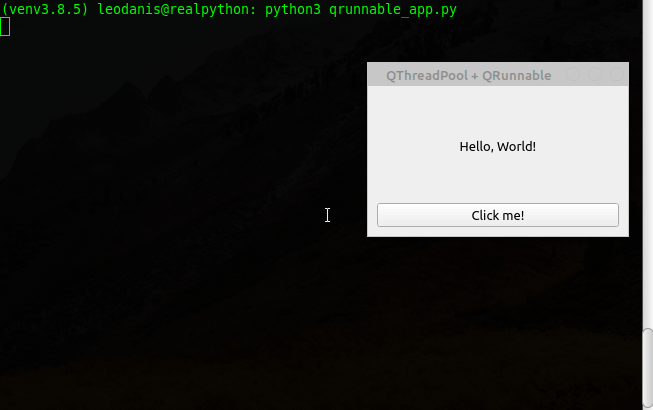Модуль random для генерации случайных чисел в python
Содержание:
- Как использовать модуль random в Python
- Picking Numbers
- Собственная реализация
- Функции для последовательностей
- Выбор случайного элемента из списка choice() модуль random
- Choosing Order
- Но ведь Unity заботится об объеме используемой ОЗУ
- Примеры использования модуля random.
- Functions for sequences¶
- Генерация случайного n-мерного массива целых чисел
- Real-valued distributions¶
- Examples¶
- Создание случайного пароля пользователя
- Игра в кости с использованием модуля random в Python
- Guide to Random Drawings
Как использовать модуль random в Python
Для достижения перечисленных выше задач модуль random будет использовать разнообразные функции. Способы использования данных функций будут описаны в следующих разделах статьи.
В самом начале работы необходимо импортировать модуль random в программу. Только после этого его можно будет полноценно использовать. Оператор для импорта модуля random выглядит следующим образом:
Python
import random
| 1 | importrandom |
Теперь рассмотрим использование самого модуля random на простом примере:
Python
import random
print(«Вывод случайного числа при помощи использования random.random()»)
print(random.random())
|
1 2 3 4 5 |
importrandom print(«Вывод случайного числа при помощи использования random.random()») print(random.random()) |
Вывод:
Shell
Вывод случайного числа при помощи использования random.random()
0.9461613475266107
|
1 2 |
Выводслучайногочислаприпомощииспользованияrandom.random() 0.9461613475266107 |
Как видите, в результате мы получили . У вас, конечно, выйдет другое случайно число.
- является базовой функцией модуля ;
- Почти все функции модуля зависят от базовой функции ;
- возвращает следующее случайное число с плавающей запятой в промежутке .
Перед разбором функций модуля random давайте рассмотрим основные сферы их применения.
Picking Numbers
Often there’s a reason that you need to pick a random number between a specific set of numbers. This can be done by using the pick your own number option. This allows you to pick the specific number range you need for picking your numbers. Below you can find some of the more common number ranges people are looking to use with this random tool.
- Pick a number number between
- Pick a number number between
- Pick a number number between
- Pick a number number between
- Pick a number number between
- Pick a number number between
- Pick a number number between
- Pick a number number between
- Pick a number number between
- Pick a number number between
- Pick a number number between
- Pick a number number between
- Pick a number number between
- Pick a number number between
- Pick a number number between
These are a few of many reasons you may want to use this free online number generator. If you have found the random number generator useful, we’d love to hear from you and how you use it. It’s through hearing from those who use it that we are able to improve it when we do updates. We’d also love to hear any suggestions you may have to make the tool better for everyone.
Собственная реализация
Лучшим решением будет сделать что-то простое, что занимает мало памяти и очень быстро работает.
В результате всех исследований и проведенных опытов, самым простым и быстрым вариантом стал — конгруэнтный мультипликативный алгоритм с модулем от числа 2^31.
Я не стал помещать класс в пространство имен, потому что считаю что то, что ниже — проблема архитектора, а не моя.
Генерацию seedá я сделал в нескольких вариациях:
-
Time — использует структуру и предоставляет достаточно надежное значение seedá, но аллоцирует 208 байт. Потому что (сюрприз) неуправляемая структура.
-
Guid — использует структуру и . Guid в отличии от работает медленнее, но аллоцирует всего 16 байт и является управляемой структурой (т.е. размещается на стеке и не копируется в кучу).
-
Crypto — использует и аллоцирует 4 байта. По скорости сравним с Guid, но данный метод не тестировался на разных платформах. Так же, пара простых строчек, может прибавить к размеру билда, если пространство имен раньше не входило в ваш билд.
Тестирование производительности
Кол-во аллокаций неуправляемых объектов проверялся таким образом:
Значения в таблице — среднее время затраченное на заполнение двумерного массива размерностью NxN:
|
Внизу:Кол-во итераций/размер двумерного массива Справа: Тип используемого генератора |
UnityEngine.Random (milliseconds) |
System.Random (milliseconds) |
FastRandom (milliseconds) |
|
25/4096×4096 |
472 |
611 |
223 |
|
1000/1024×1024 |
28 |
43 |
15 |
Тестировалось на ноутбуке ASUS Zephyrus G15 в редакторе. Под разные платформы не компилировалось.
Как установить
Если версия Unity выше чем 2019.3 в файл Packages/manifest.json добавить:
Или просто скачать .unitypackage из раздел Releases
Функции для последовательностей
random.choice(seq)Возвращает случайный элемент из непустой последовательности . Если пуст, возникает ошибка .
Копировать
random.choices(population, weights=None, *, cum_weights=None, k=1)Возвращает список элементов размером , выбранных из с заменой. Если пуст, возникает ошибка .
Копировать
Если задана последовательность , выбор производится в соответствии с относительным весом. В качестве альтернативы, если задана последовательность , выбор производится в соответствии с совокупными весами (возможно, вычисляется с использованием ).
Например, относительный вес эквивалентны кумулятивному весу . Внутренне относительные веса преобразуются в кумулятивные перед выбором, поэтому поставка кумулятивного веса экономит время.
Если ни , ни не указаны, выбор производится с равной вероятностью. Если задана последовательность веса, она должна быть такой же, как и последовательность . возникает, если не правильно указан аргумент или .
или могут использовать любой тип чисел, который взаимодействует со значением , возвращаемым функцией (который включает целые числа, числа с плавающей точкой и фракции, но исключает десятичные числа).
random.shuffle(x)Перемешивает последовательность на месте.Необязательный аргумент — функция 0-аргумента, возвращающая случайное значение float в ; по умолчанию это функция .
Копировать
Чтобы перемешать неизменяемую последовательность и вернуть новый перемешанный список, используйте .
Обратите внимание, что даже для небольшого общее количество перестановок может увеличиваться сильнее, чем период большинства генераторов случайных чисел.Это означает, что большинство перестановок длинной последовательности никогда не могут быть выполнены. Например, последовательность длиной 2080 элементов является самой большой, которая может вписываться в период генератора случайных чисел «Мерсин Твистер»
random.sample(population, k)Возвращает список длиной из уникальных элементов, выбранных из последовательности или множества. Используется для случайной выборки без замены.
Копировать
Это новый список, содержащий элементы из последовательности, оставляя исходную последовательности неизменной. Новый список находится в порядке выбора, так что все суб-срезы будут также случайными последовательностями.
Это позволяет победителям розыгрышей (при выборке) делиться на главный приз, второе место и далее.
Участники не должны быть hashable или уникальными. Если последовательность содержит повторы, то каждое вхождение является возможным выбором в выборке.
Что бы выбрать одно число из ряда чисел, используйте объект в качестве аргумента. Это простое решение для выборки из большой последовательности: .
Если размер выборки больше длины последовательности, возникает ошибка .
Выбор случайного элемента из списка choice() модуль random
Метод используется для выбора случайного элемента из списка. Набор может быть представлен в виде списка или python строки. Метод возвращает один случайный элемент последовательности.
Пример использования в Python:
Python
import random
list =
print(«random.choice используется для выбора случайного элемента из списка — «, random.choice(list))
|
1 2 3 4 5 |
importrandom list=55,66,77,88,99 print(«random.choice используется для выбора случайного элемента из списка — «,random.choice(list)) |
Вывод:
Shell
random.choice используется для выбора случайного элемента из списка — 55
| 1 | random.choiceиспользуетсядлявыбораслучайногоэлементаизсписка-55 |
Choosing Order
If you have a group of people and you need to designate them into a specific order, one way this can be done is to assign each person a number. You can then use the tool to decide the order of each person in the group. For example, if you have 10 people that you need to have randomly lined up, you can assign each a number and then generate a list of random numbers for all ten in the numbers generator. The top number generated would place the person assigned the first spot to that place with the other people in the group moved to the appropriate places from there. This way the numbers generator gives each person a random position.
Но ведь Unity заботится об объеме используемой ОЗУ
Нет, не заботится. Это пример плохого архитектурного решения, когда решили использовать ГПСЧ внутри реализации самого движка и одновременно предоставить доступ из C#. Объект загрузится и на протяжении жизни приложения будет всего один экземпляр в памяти. Это параллельно привносит новое неочевидное поведение и обязывает нас использовать один экземпляр Random на весь проект.
Невозможно заранее предсказать какое именно поведение потребуется пользователям. Но дать им право выбора надо.
Вот еще список потенциальных проблем, с которыми можно столкнуться:
-
Если внутри движка используется то, мы получим неожиданное поведение компонентов, предоставляемые Unity,
-
Скомпилированный в *.dll плагин устанавливает seed. И каждый раз перед вызовом придется проставлять seed. Решить это можно только через декомпиляцию (если финальная библиотека не обфусцирована).
Примеры использования модуля random.
Базовое применение модуля:
>>> import random # Случайное float: 0.0 <= x < 1.0 >>> random.random() # 0.37444887175646646 # Случайное float: 2.5 <= x < 10.0 >>> random.uniform(2.5, 10.0) # 3.1800146073117523 # Интервал между прибытием в среднем 5 секунд >>> random.expovariate(1 5) # 5.148957571865031 # Четное целое число от 0 до 100 включительно >>> random.randrange(10) # 7 # Even integer from 0 to 100 inclusive >>> random.randrange(, 101, 2) 26 # Один случайный элемент из последовательности >>> random.choice() 'draw' >>> deck = 'ace two three four'.split() # Перемешать список >>> random.shuffle(deck) >>> deck 'four', 'two', 'ace', 'three' # Четыре образца без замены >>> random.sample(, k=4) #
Имитационные расчеты:
# Шесть вращений колеса рулетки (взвешенная выборка с заменой)
>>> choices(, 18, 18, 2], k=6)
#
# Сдайте 20 карт без замены из колоды из 52 игральных карт
# и определите пропорцию карт с достоинством в:
# десять, валет, дама или король.
>>> dealt = sample(, counts=16, 36], k=20)
>>> dealt.count('tens') 20
# 0.15
# Оценка вероятности получения 5 или более попаданий из 7
# бросаний монеты, которая выпадает орлом в 60% случаев.
>>> def trial():
... return choices('HT', cum_weights=(0.60, 1.00), k=7).count('H') >= 5
...
>>> sum(trial() for i in range(10_000)) 10_000
# 0.4169
>>> # Вероятность того, что медиана из 5 выборок находится в средних двух квартилях
>>> def trial():
... return 2_500 <= sorted(choices(range(10_000), k=5))[2 < 7_500
...
>>> sum(trial() for i in range(10_000)) 10_000
# 0.7958
Пример статистической начальной загрузки с использованием повторной выборки с заменой для оценки доверительного интервала для среднего значения выборки:
# http://statistics.about.com/od/Applications/a/Example-Of-Bootstrapping.htm
from statistics import fmean as mean
from random import choices
data = 41, 50, 29, 37, 81, 30, 73, 63, 20, 35, 68, 22, 60, 31, 95
means = sorted(mean(choices(data, k=len(data))) for i in range(100))
print(f'The sample mean of {mean(data).1f} has a 90% confidence '
f'interval from {means5.1f} to {means94.1f}')
Пример теста перестановки повторной выборки для определения статистической значимости или Р-значения наблюдаемой разницы между эффектами препарата и плацебо:
# Example from "Statistics is Easy" by Dennis Shasha and Manda Wilson
from statistics import fmean as mean
from random import shuffle
drug = 54, 73, 53, 70, 73, 68, 52, 65, 65
placebo = 54, 51, 58, 44, 55, 52, 42, 47, 58, 46
observed_diff = mean(drug) - mean(placebo)
n = 10_000
count =
combined = drug + placebo
for i in range(n):
shuffle(combined)
new_diff = mean(combined) - mean(combinedlen(drug):])
count += (new_diff >= observed_diff)
print(f'{n} label reshufflings produced only {count} instances with a difference')
print(f'at least as extreme as the observed difference of {observed_diff.1f}.')
print(f'The one-sided p-value of {count n.4f} leads us to reject the null')
print(f'hypothesis that there is no difference between the drug and the placebo.')
Моделирование времени прибытия и доставки услуг для многосерверной очереди:
from heapq import heappush, heappop
from random import expovariate, gauss
from statistics import mean, median, stdev
average_arrival_interval = 5.6
average_service_time = 15.0
stdev_service_time = 3.5
num_servers = 3
waits = []
arrival_time = 0.0
servers = 0.0 * num_servers # time when each server becomes available
for i in range(100_000):
arrival_time += expovariate(1.0 average_arrival_interval)
next_server_available = heappop(servers)
wait = max(0.0, next_server_available - arrival_time)
waits.append(wait)
service_duration = gauss(average_service_time, stdev_service_time)
service_completed = arrival_time + wait + service_duration
heappush(servers, service_completed)
print(f'Mean wait: {mean(waits).1f}. Stdev wait: {stdev(waits).1f}.')
print(f'Median wait: {median(waits).1f}. Max wait: {max(waits).1f}.')
Functions for sequences¶
- (seq)
-
Return a random element from the non-empty sequence seq. If seq is empty,
raises .
- (population, weights=None, *, cum_weights=None, k=1)
-
Return a k sized list of elements chosen from the population with replacement.
If the population is empty, raises .If a weights sequence is specified, selections are made according to the
relative weights. Alternatively, if a cum_weights sequence is given, the
selections are made according to the cumulative weights (perhaps computed
using ). For example, the relative weights
are equivalent to the cumulative weights
. Internally, the relative weights are converted to
cumulative weights before making selections, so supplying the cumulative
weights saves work.If neither weights nor cum_weights are specified, selections are made
with equal probability. If a weights sequence is supplied, it must be
the same length as the population sequence. It is a
to specify both weights and cum_weights.The weights or cum_weights can use any numeric type that interoperates
with the values returned by (that includes
integers, floats, and fractions but excludes decimals). Behavior is
undefined if any weight is negative. A is raised if all
weights are zero.For a given seed, the function with equal weighting
typically produces a different sequence than repeated calls to
. The algorithm used by uses floating
point arithmetic for internal consistency and speed. The algorithm used
by defaults to integer arithmetic with repeated selections
to avoid small biases from round-off error.New in version 3.6.
Changed in version 3.9: Raises a if all weights are zero.
- (x, random)
-
Shuffle the sequence x in place.
The optional argument random is a 0-argument function returning a random
float in [0.0, 1.0); by default, this is the function .To shuffle an immutable sequence and return a new shuffled list, use
instead.Note that even for small , the total number of permutations of x
can quickly grow larger than the period of most random number generators.
This implies that most permutations of a long sequence can never be
generated. For example, a sequence of length 2080 is the largest that
can fit within the period of the Mersenne Twister random number generator.Deprecated since version 3.9, will be removed in version 3.11: The optional parameter random.
Генерация случайного n-мерного массива целых чисел
Для генерации случайного n-мерного массива целых чисел используется :
Python
import numpy
random_integer_array = numpy.random.random_integers(1, 10, 5)
print(«1-мерный массив случайных целых чисел \n», random_integer_array,»\n»)
random_integer_array = numpy.random.random_integers(1, 10, size=(3, 2))
print(«2-мерный массив случайных целых чисел \n», random_integer_array)
|
1 2 3 4 5 6 7 8 |
importnumpy random_integer_array=numpy.random.random_integers(1,10,5) print(«1-мерный массив случайных целых чисел \n»,random_integer_array,»\n») random_integer_array=numpy.random.random_integers(1,10,size=(3,2)) print(«2-мерный массив случайных целых чисел \n»,random_integer_array) |
Вывод:
Shell
1-мерный массив случайных целых чисел
2-мерный массив случайных целых чисел
]
|
1 2 3 4 5 6 7 |
1-мерныймассивслучайныхцелыхчисел 101421 2-мерныймассивслучайныхцелыхчисел 26 910 36 |
Real-valued distributions¶
The following functions generate specific real-valued distributions. Function
parameters are named after the corresponding variables in the distribution’s
equation, as used in common mathematical practice; most of these equations can
be found in any statistics text.
- ()
-
Return the next random floating point number in the range [0.0, 1.0).
- (a, b)
-
Return a random floating point number N such that for
and for .The end-point value may or may not be included in the range
depending on floating-point rounding in the equation .
- (low, high, mode)
-
Return a random floating point number N such that and
with the specified mode between those bounds. The low and high bounds
default to zero and one. The mode argument defaults to the midpoint
between the bounds, giving a symmetric distribution.
- (alpha, beta)
-
Beta distribution. Conditions on the parameters are and
. Returned values range between 0 and 1.
- (lambd)
-
Exponential distribution. lambd is 1.0 divided by the desired
mean. It should be nonzero. (The parameter would be called
“lambda”, but that is a reserved word in Python.) Returned values
range from 0 to positive infinity if lambd is positive, and from
negative infinity to 0 if lambd is negative.
- (alpha, beta)
-
Gamma distribution. (Not the gamma function!) Conditions on the
parameters are and .The probability distribution function is:
x ** (alpha - 1) * math.exp(-x beta) pdf(x) = -------------------------------------- math.gamma(alpha) * beta ** alpha
- (mu, sigma)
-
Gaussian distribution. mu is the mean, and sigma is the standard
deviation. This is slightly faster than the function
defined below.Multithreading note: When two threads call this function
simultaneously, it is possible that they will receive the
same return value. This can be avoided in three ways.
1) Have each thread use a different instance of the random
number generator. 2) Put locks around all calls. 3) Use the
slower, but thread-safe function instead.
- (mu, sigma)
-
Log normal distribution. If you take the natural logarithm of this
distribution, you’ll get a normal distribution with mean mu and standard
deviation sigma. mu can have any value, and sigma must be greater than
zero.
- (mu, sigma)
-
Normal distribution. mu is the mean, and sigma is the standard deviation.
- (mu, kappa)
-
mu is the mean angle, expressed in radians between 0 and 2*pi, and kappa
is the concentration parameter, which must be greater than or equal to zero. If
kappa is equal to zero, this distribution reduces to a uniform random angle
over the range 0 to 2*pi.
- (alpha)
-
Pareto distribution. alpha is the shape parameter.
Examples¶
Basic examples:
>>> random() # Random float: 0.0 <= x < 1.0 0.37444887175646646 >>> uniform(2.5, 10.0) # Random float: 2.5 <= x < 10.0 3.1800146073117523 >>> expovariate(1 5) # Interval between arrivals averaging 5 seconds 5.148957571865031 >>> randrange(10) # Integer from 0 to 9 inclusive 7 >>> randrange(, 101, 2) # Even integer from 0 to 100 inclusive 26 >>> choice() # Single random element from a sequence 'draw' >>> deck = 'ace two three four'.split() >>> shuffle(deck) # Shuffle a list >>> deck >>> sample(, k=4) # Four samples without replacement
Simulations:
>>> # Six roulette wheel spins (weighted sampling with replacement)
>>> choices(, 18, 18, 2], k=6)
>>> # Deal 20 cards without replacement from a deck
>>> # of 52 playing cards, and determine the proportion of cards
>>> # with a ten-value: ten, jack, queen, or king.
>>> dealt = sample(, counts=16, 36], k=20)
>>> dealt.count('tens') 20
0.15
>>> # Estimate the probability of getting 5 or more heads from 7 spins
>>> # of a biased coin that settles on heads 60% of the time.
>>> def trial():
... return choices('HT', cum_weights=(0.60, 1.00), k=7).count('H') >= 5
...
>>> sum(trial() for i in range(10_000)) 10_000
0.4169
>>> # Probability of the median of 5 samples being in middle two quartiles
>>> def trial():
... return 2_500 <= sorted(choices(range(10_000), k=5))[2 < 7_500
...
>>> sum(trial() for i in range(10_000)) 10_000
0.7958
Example of statistical bootstrapping using resampling
with replacement to estimate a confidence interval for the mean of a sample:
# http://statistics.about.com/od/Applications/a/Example-Of-Bootstrapping.htm
from statistics import fmean as mean
from random import choices
data = 41, 50, 29, 37, 81, 30, 73, 63, 20, 35, 68, 22, 60, 31, 95
means = sorted(mean(choices(data, k=len(data))) for i in range(100))
print(f'The sample mean of {mean(data).1f} has a 90% confidence '
f'interval from {means5.1f} to {means94.1f}')
Example of a
to determine the statistical significance or p-value of an observed difference
between the effects of a drug versus a placebo:
# Example from "Statistics is Easy" by Dennis Shasha and Manda Wilson
from statistics import fmean as mean
from random import shuffle
drug = 54, 73, 53, 70, 73, 68, 52, 65, 65
placebo = 54, 51, 58, 44, 55, 52, 42, 47, 58, 46
observed_diff = mean(drug) - mean(placebo)
n = 10_000
count =
combined = drug + placebo
for i in range(n):
shuffle(combined)
new_diff = mean(combined) - mean(combinedlen(drug):])
count += (new_diff >= observed_diff)
print(f'{n} label reshufflings produced only {count} instances with a difference')
print(f'at least as extreme as the observed difference of {observed_diff.1f}.')
print(f'The one-sided p-value of {count n.4f} leads us to reject the null')
print(f'hypothesis that there is no difference between the drug and the placebo.')
Simulation of arrival times and service deliveries for a multiserver queue:
from heapq import heappush, heappop
from random import expovariate, gauss
from statistics import mean, median, stdev
average_arrival_interval = 5.6
average_service_time = 15.0
stdev_service_time = 3.5
num_servers = 3
waits = []
arrival_time = 0.0
servers = 0.0 * num_servers # time when each server becomes available
for i in range(100_000):
arrival_time += expovariate(1.0 average_arrival_interval)
next_server_available = heappop(servers)
wait = max(0.0, next_server_available - arrival_time)
waits.append(wait)
service_duration = gauss(average_service_time, stdev_service_time)
service_completed = arrival_time + wait + service_duration
heappush(servers, service_completed)
print(f'Mean wait: {mean(waits).1f}. Stdev wait: {stdev(waits).1f}.')
print(f'Median wait: {median(waits).1f}. Max wait: {max(waits).1f}.')
Создание случайного пароля пользователя
Для того , чтобы создать случайный пароль пользователя , можно использовать символы , представленные в модуле. В частности для знаков пунктуации, для букв и для цифр:
Затем мы можем объединить все эти символы в имени с именем :
Удалите любой из них, чтобы создать пул символов с меньшим количеством элементов.
После этого, мы можем использовать для генерации пароля. Для пароля длиной 10:
Обратите внимание , что другие процедуры , сделанные немедленно доступны в модуле — такие , как , и т.д. — не подходит для криптографических целей
За кулисами, эти процедуры использовать Вихрь Мерсенна ПСЧ , который не удовлетворяет требованиям , предъявляемым к CSPRNG . Таким образом, в частности, вам не следует использовать какие-либо из них для создания паролей, которые вы планируете использовать. Всегда используйте экземпляр , как показано выше.
Начиная с Python 3.6 доступен модуль `секреты`, который предоставляет криптографически безопасную функциональность. Процитировав , чтобы сгенерировать * «десятибуквенный буквенно-цифровой пароль, содержащий как минимум один символ в нижнем регистре, как минимум один символ в верхнем регистре и как минимум три цифры», * вы можете: импортировать строку alphabet = string.ascii_letters + string.digits, а True: пароль = » .join (выбор (алфавит) для i в диапазоне (10)) if (любой (c.islower () для c в пароле) и любой (c. isupper () для c в пароле) и sum (c.isdigit () для c в пароле)> = 3): break
Игра в кости с использованием модуля random в Python
Далее представлен код простой игры в кости, которая поможет понять принцип работы функций модуля random. В игре два участника и два кубика.
- Участники по очереди бросают кубики, предварительно встряхнув их;
- Алгоритм высчитывает сумму значений кубиков каждого участника и добавляет полученный результат на доску с результатами;
- Участник, у которого в результате большее количество очков, выигрывает.
Код программы для игры в кости Python:
Python
import random
PlayerOne = «Анна»
PlayerTwo = «Алекс»
AnnaScore = 0
AlexScore = 0
# У каждого кубика шесть возможных значений
diceOne =
diceTwo =
def playDiceGame():
«»»Оба участника, Анна и Алекс, бросают кубик, используя метод shuffle»»»
for i in range(5):
#оба кубика встряхиваются 5 раз
random.shuffle(diceOne)
random.shuffle(diceTwo)
firstNumber = random.choice(diceOne) # использование метода choice для выбора случайного значения
SecondNumber = random.choice(diceTwo)
return firstNumber + SecondNumber
print(«Игра в кости использует модуль random\n»)
#Давайте сыграем в кости три раза
for i in range(3):
# определим, кто будет бросать кости первым
AlexTossNumber = random.randint(1, 100) # генерация случайного числа от 1 до 100, включая 100
AnnaTossNumber = random.randrange(1, 101, 1) # генерация случайного числа от 1 до 100, не включая 101
if( AlexTossNumber > AnnaTossNumber):
print(«Алекс выиграл жеребьевку.»)
AlexScore = playDiceGame()
AnnaScore = playDiceGame()
else:
print(«Анна выиграла жеребьевку.»)
AnnaScore = playDiceGame()
AlexScore = playDiceGame()
if(AlexScore > AnnaScore):
print («Алекс выиграл игру в кости. Финальный счет Алекса:», AlexScore, «Финальный счет Анны:», AnnaScore, «\n»)
else:
print(«Анна выиграла игру в кости. Финальный счет Анны:», AnnaScore, «Финальный счет Алекса:», AlexScore, «\n»)
|
1 2 3 4 5 6 7 8 9 10 11 12 13 14 15 16 17 18 19 20 21 22 23 24 25 26 27 28 29 30 31 32 33 34 35 36 37 38 39 40 41 42 43 44 45 |
importrandom PlayerOne=»Анна» PlayerTwo=»Алекс» AnnaScore= AlexScore= diceOne=1,2,3,4,5,6 diceTwo=1,2,3,4,5,6 defplayDiceGame() «»»Оба участника, Анна и Алекс, бросают кубик, используя метод shuffle»»» foriinrange(5) #оба кубика встряхиваются 5 раз random.shuffle(diceOne) random.shuffle(diceTwo) firstNumber=random.choice(diceOne)# использование метода choice для выбора случайного значения SecondNumber=random.choice(diceTwo) returnfirstNumber+SecondNumber print(«Игра в кости использует модуль random\n») foriinrange(3) # определим, кто будет бросать кости первым AlexTossNumber=random.randint(1,100)# генерация случайного числа от 1 до 100, включая 100 AnnaTossNumber=random.randrange(1,101,1)# генерация случайного числа от 1 до 100, не включая 101 if(AlexTossNumber>AnnaTossNumber) print(«Алекс выиграл жеребьевку.») AlexScore=playDiceGame() AnnaScore=playDiceGame() else print(«Анна выиграла жеребьевку.») AnnaScore=playDiceGame() AlexScore=playDiceGame() if(AlexScore>AnnaScore) print(«Алекс выиграл игру в кости. Финальный счет Алекса:»,AlexScore,»Финальный счет Анны:»,AnnaScore,»\n») else print(«Анна выиграла игру в кости. Финальный счет Анны:»,AnnaScore,»Финальный счет Алекса:»,AlexScore,»\n») |
Вывод:
Shell
Игра в кости использует модуль random
Анна выиграла жеребьевку.
Анна выиграла игру в кости. Финальный счет Анны: 5 Финальный счет Алекса: 2
Анна выиграла жеребьевку.
Анна выиграла игру в кости. Финальный счет Анны: 10 Финальный счет Алекса: 2
Алекс выиграл жеребьевку.
Анна выиграла игру в кости. Финальный счет Анны: 10 Финальный счет Алекса: 8
|
1 2 3 4 5 6 7 8 9 10 |
Игравкостииспользуетмодульrandom Аннавыигралаигрувкости.ФинальныйсчетАнны5ФинальныйсчетАлекса2 Аннавыигралаигрувкости.ФинальныйсчетАнны10ФинальныйсчетАлекса2 Аннавыигралаигрувкости.ФинальныйсчетАнны10ФинальныйсчетАлекса8 |
Вот и все. Оставить комментарии можете в секции ниже.
Guide to Random Drawings
RANDOM.ORG is a true random number service that generates
randomness via atmospheric noise. One of the most popular uses of
the service is to hold drawings and lotteries.
Using RANDOM.ORG, you can hold drawings in a
manner that is fair, unbiased and in a way where entrants can easily
convince themselves that you had no influence over who was picked as
winner. This page explains how to do that.
Blog and Business Giveaways
New! → Check out Video Tutorial #1 to see how the Third-Party Draw
Service works.
-
Register for a RANDOM.ORG account with at least $4.95 worth of credit. This is enough for
one drawing with up to 500 entrants and multiple
winners, and you can always top up later if you like. -
Login to your account and go to the Third-Party Draw Service and begin an
entrant-accessible drawing. - When the service asks you to upload your entrant list, use the
email addresses for your entrants. RANDOM.ORG will keep these
addresses confidential and never send emails to them. - When the draw is completed, you receive a link to a record of
the drawing, which you can post on your blog or
web site. Someone who participated in the drawing can go to this record and enter their email address to confirm
that they really were entered into the drawing and
whether they won.
This approach lets the entrants in your drawing verify that the drawing was held as you promised
(e.g., on a particular date), whether they were included as entrants
and whether they were picked as winners.
Questions? As always, feel free to get in touch or see the , which concerns the
Third-Party Draw Service.
Audited Lotteries and Sweepstakes
If you are a PR company, a media company, a charity or a
professional lottery operator, you may not want your drawings to be publically visible, but you do want the
records to be available to your auditors. In this case, the best
way to hold random drawings is as follows:
- Estimate the number of entrants in your drawing and use the Price Calculator to
see how much it will cost. For large individual drawings or many drawings over a
period of time, you can inquire for a quote on
a flat fee pricing or bulk discount. -
Register for a RANDOM.ORG account with sufficient credit to cover your draw. If you end up
having more entrants than expected, you can add the remaining
credit later. -
Login to your account and go to the Third-Party Draw Service and begin a
private drawing. - When the service asks you to upload your entrant list, your
can use entrant names, database identifiers, email addresses,
phone numbers or any other alphanumeric string that identifies the
entrants uniquely. These identifiers will remain completely
confidential, available only to you and any auditors that you
give access to your account. - When the draw is completed, you receive a link to a record of
the drawing. The record is private, meaning that
the details are only visible when you are logged in. To
facilitate auditing, you will need to provide your auditors with
your RANDOM.ORG login and password, so they can review your
records.
Please see the description of
the Third-Party Draw Service for further details.
1998-2021 RANDOM.ORGFollow us: | Terms and ConditionsAbout Us




